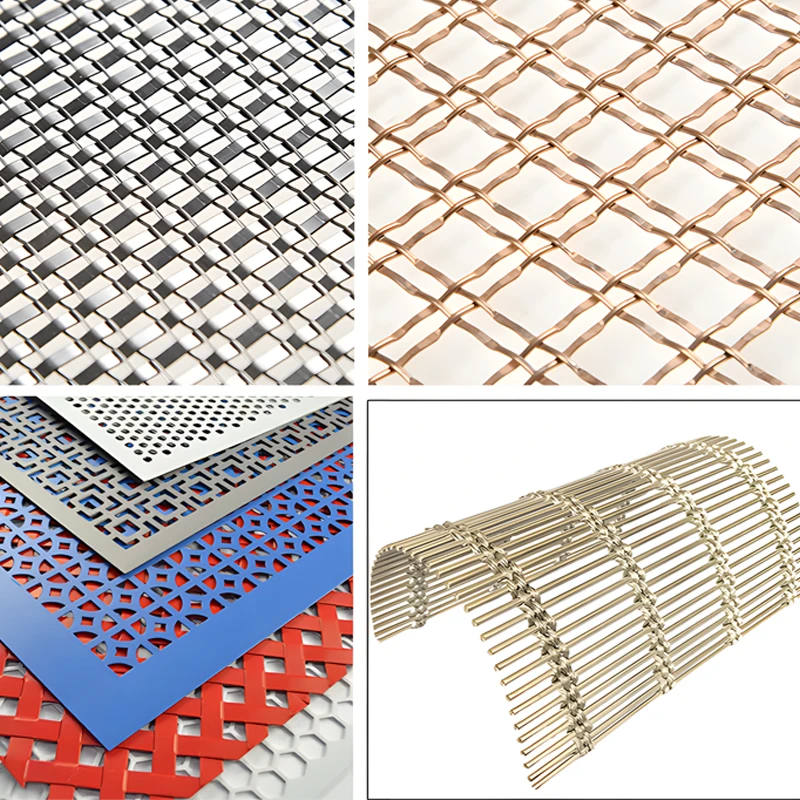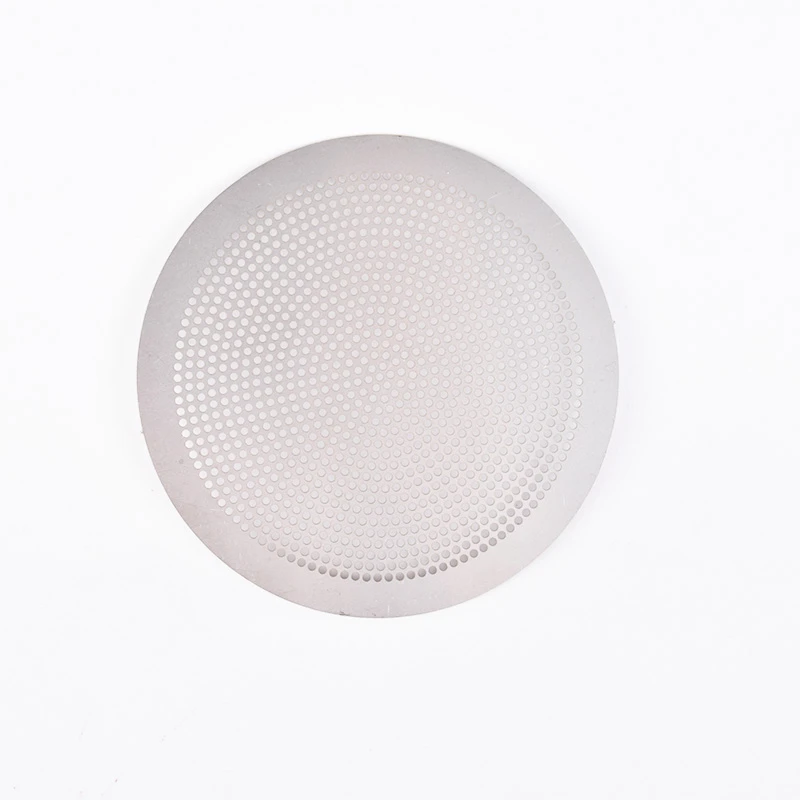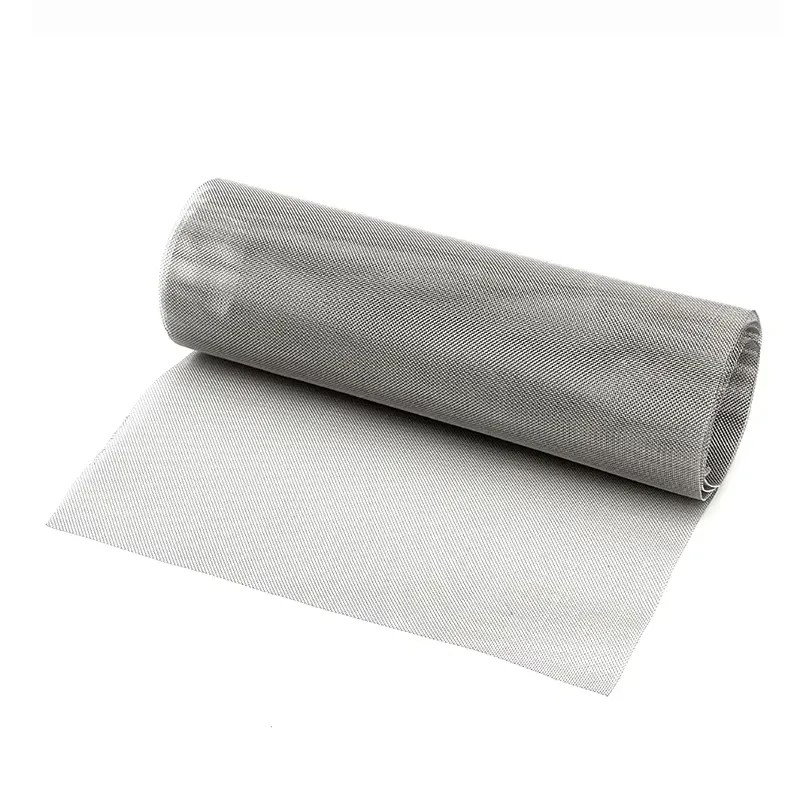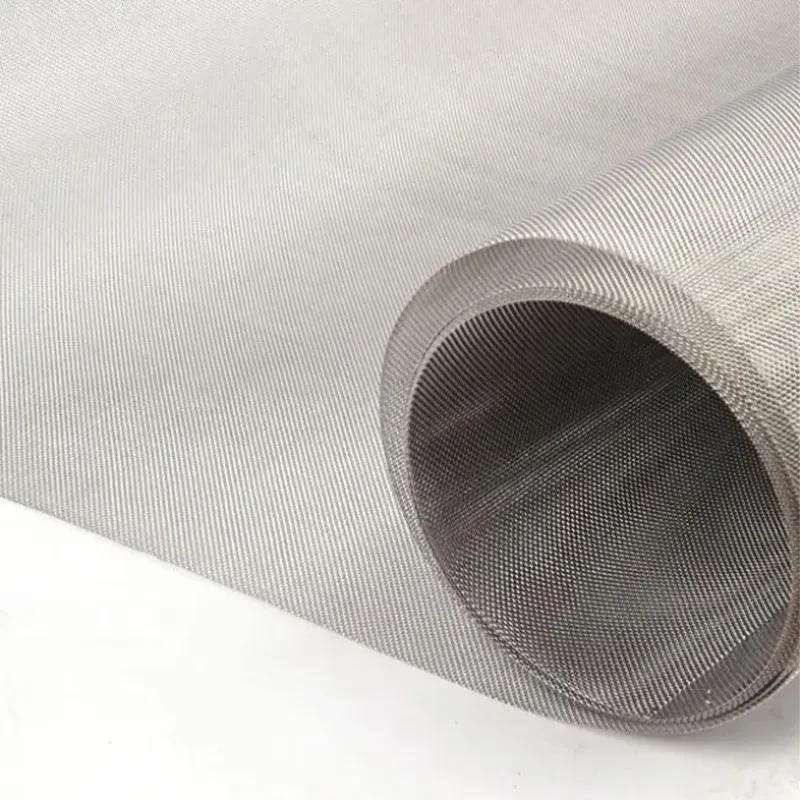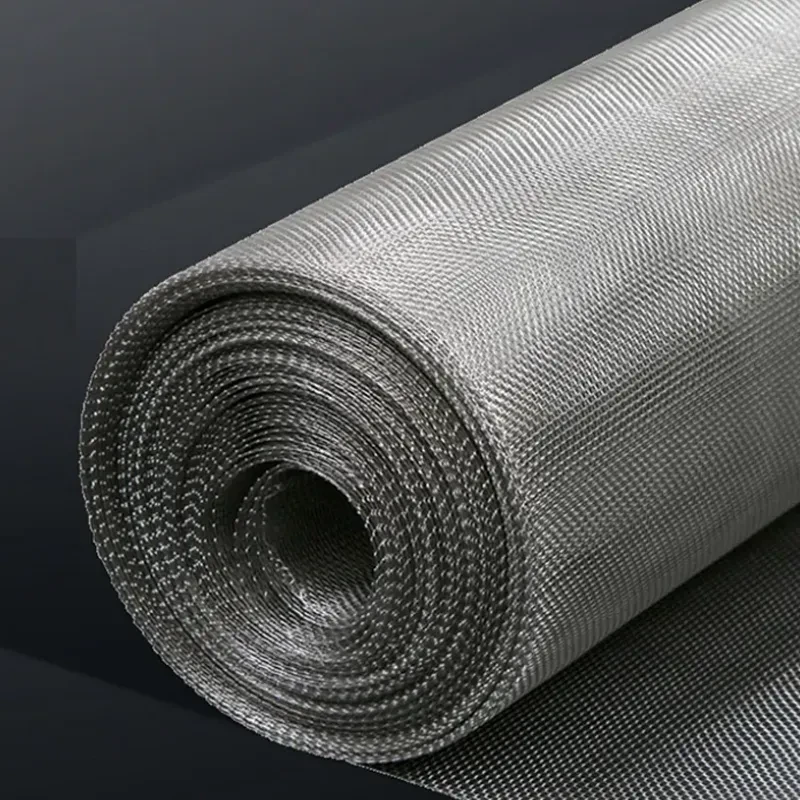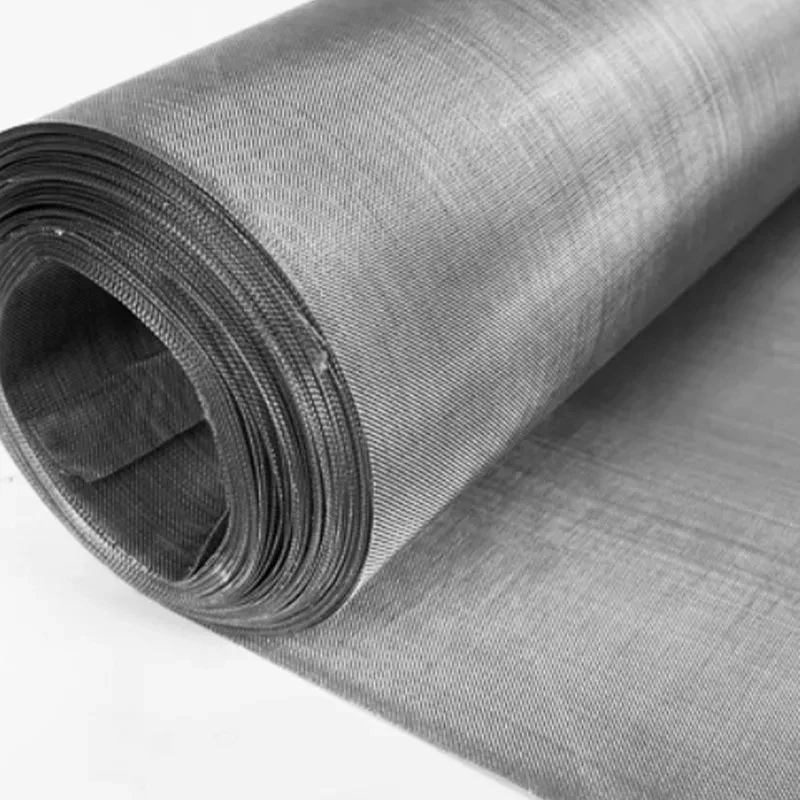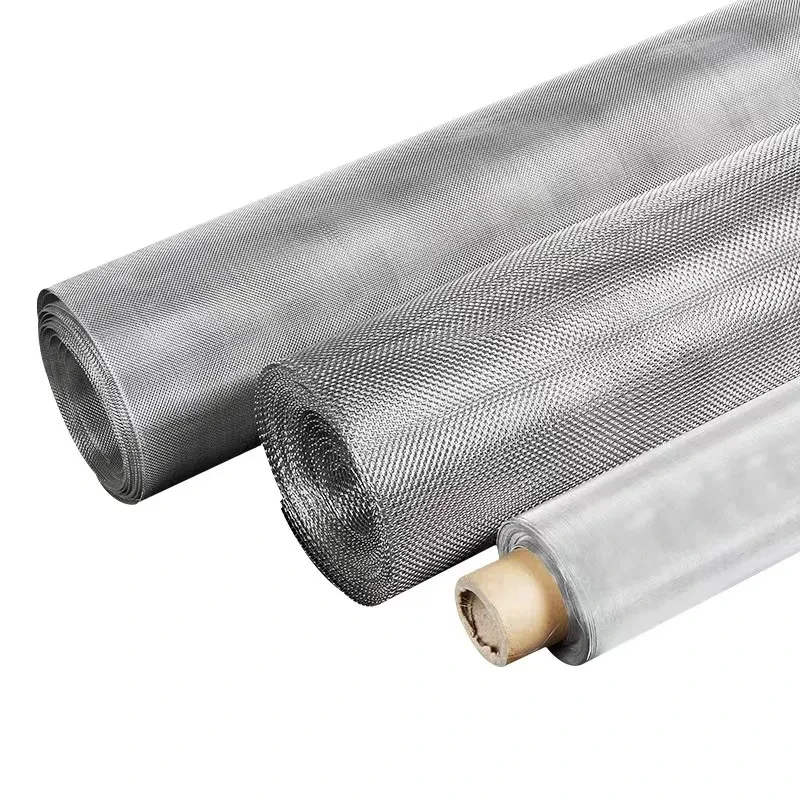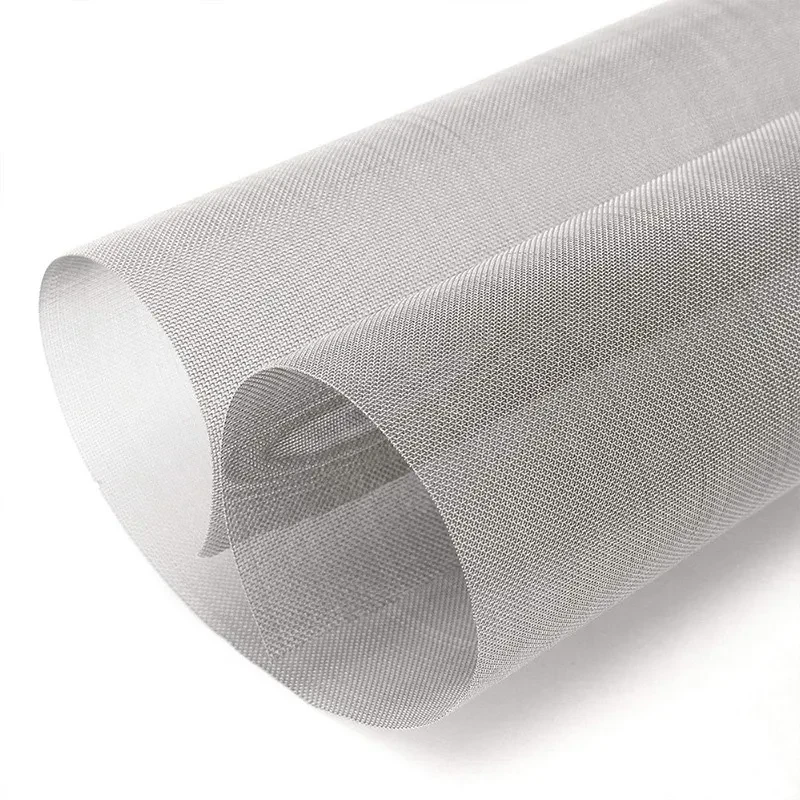Stylish Decorative Metal Grid Panels | Durable & Versatile
Exploring the Versatility and Engineering of decorative metal grid
In the contemporary landscape of architecture, interior design, and industrial applications, the decorative metal grid stands out as a material of exceptional versatility and aesthetic appeal. These grids, including products like the Metal Sieve Mesh, transcend mere functionality, offering a sophisticated blend of durability, design flexibility, and structural integrity. From enhancing facade aesthetics to providing robust security and efficient filtration, their applications are as diverse as their manufacturing processes. Understanding the intricacies of these products, from their material composition to their specific technical parameters and varied uses, is crucial for B2B decision-makers seeking optimal solutions for their projects. This article delves into the core aspects of decorative metal grids, offering insights into their technical specifications, manufacturing prowess, and strategic advantages across various industries.
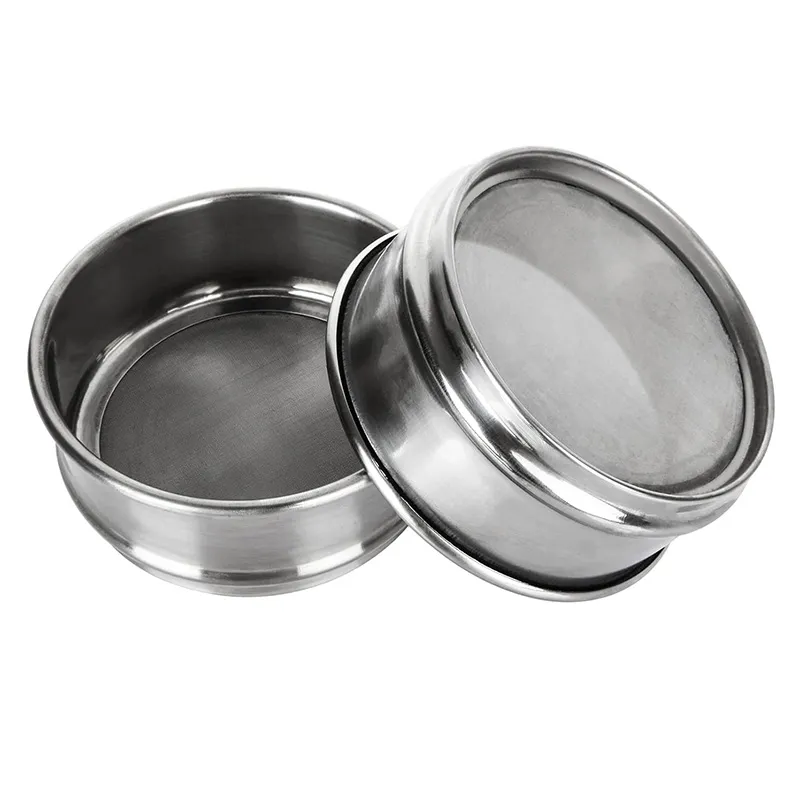
The demand for sophisticated materials that offer both visual appeal and robust performance has driven significant innovation in the production of metal grids. Specifically, the rise of products like decorative metal grill mesh has reshaped design possibilities, allowing for creative ventilation solutions, unique partitioning, and striking visual elements that complement modern architectural themes. These grids are not just about form; they are engineered to meet stringent performance requirements, providing solutions that are energy-efficient, corrosion-resistant, and capable of withstanding demanding environments. Our focus here is to provide a comprehensive overview that highlights the engineering excellence and practical benefits of integrating these advanced metal products into diverse professional projects.
Current Industry Trends and Market Dynamics
The market for decorative metal grid solutions is experiencing robust growth, driven by increasing demand in construction, interior design, and specialized industrial applications. Key trends include a heightened focus on sustainable materials, modular construction techniques, and advanced aesthetic integration. Architects and designers are increasingly specifying these grids for their ability to contribute to LEED-certified buildings, offering optimal light diffusion and airflow without compromising structural integrity. The shift towards open-plan designs and the desire for adaptable spaces further fuel the adoption of materials like decorative metal grilles for cabinet doors and privacy screens, providing both functionality and a distinct visual signature. This growth reflects a broader industry movement towards high-performance, visually appealing, and eco-conscious building materials.

Technological advancements, particularly in automated manufacturing processes such as CNC punching and laser cutting, have expanded the possibilities for intricate patterns and precise dimensions, making custom solutions more accessible and cost-effective. The market is also witnessing an increased preference for materials offering superior corrosion resistance, such as marine-grade stainless steel and anodized aluminum, especially in outdoor or high-humidity environments. This evolution underscores a commitment to long-term durability and reduced maintenance. According to recent market analyses, the global market for expanded metal is projected to reach USD 10.5 billion by 2028, growing at a CAGR of 5.8%, indicating a strong trajectory for versatile products like steel expanded metal, which serves both functional and aesthetic purposes within the broader grid category.
Manufacturing Process of Decorative Metal Grid
The creation of a high-quality decorative metal grid involves a sophisticated sequence of processes, ensuring both structural integrity and aesthetic precision. The journey begins with the careful selection of raw materials, predominantly high-grade stainless steel (304, 316L), aluminum alloys (6061, 5052), carbon steel, brass, and copper, chosen for their specific properties such as corrosion resistance, malleability, and strength. Manufacturing techniques vary depending on the desired grid pattern and application. For example, expanded metal grids are produced by slitting and stretching a solid sheet, creating a seamless, robust mesh with no welds or interlocks. Perforated metal grids, conversely, are made by punching precise patterns of holes into flat sheets using advanced CNC machinery, allowing for complex custom designs. Woven wire mesh, another common type, involves weaving individual wires into a grid pattern, similar to textile production, offering flexibility and varied mesh sizes.
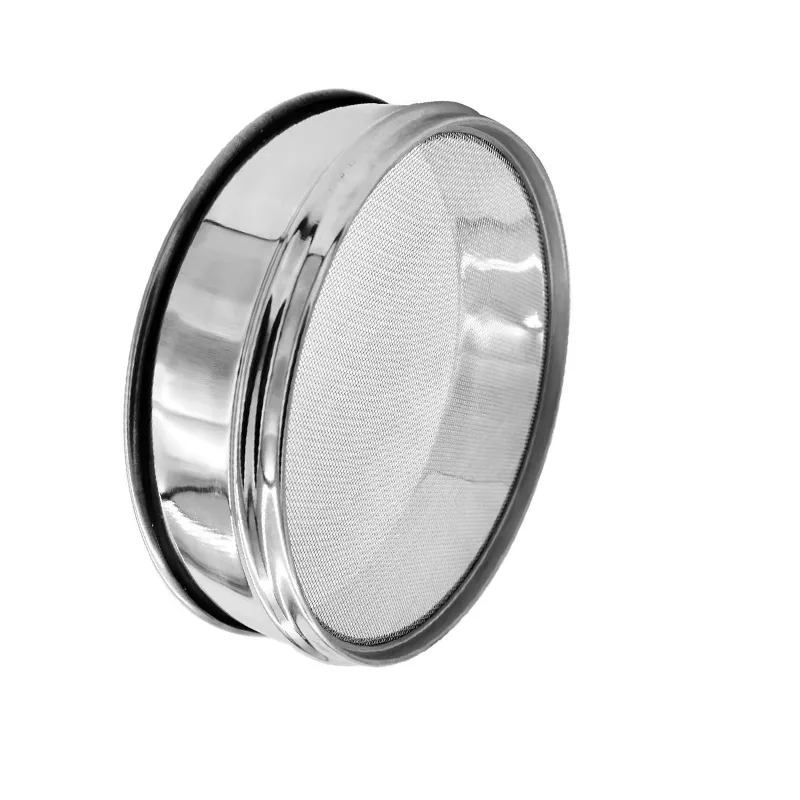
Post-fabrication, the grids undergo crucial finishing processes, which include polishing, powder coating, anodizing, or galvanization. These finishes not only enhance the aesthetic appeal but also provide an additional layer of protection against environmental factors, extending the product's service life significantly. Quality control is paramount throughout this process, adhering strictly to international standards such as ISO 9001 for quality management and ASTM standards for material specifications and testing (e.g., ASTM A240 for stainless steel, ASTM B209 for aluminum). Each batch undergoes rigorous inspection for dimensional accuracy, material composition, and finish quality. Typical service life for well-maintained stainless steel decorative grids can exceed 30 years, showcasing their inherent durability. This meticulous approach ensures that each decorative metal grid meets the demanding requirements of industries from petrochemical and metallurgy to architectural facade design and water treatment, offering benefits like improved energy efficiency through optimized airflow and superior corrosion resistance in harsh operational environments.
Technical Parameters and Specifications of Decorative Metal Grid
Understanding the technical parameters of decorative metal grid is essential for precise application and performance prediction. These parameters dictate the grid's suitability for specific environments and functional requirements. Key specifications typically include material type, thickness (gauge), opening size (mesh size or aperture), percentage of open area, and overall panel dimensions. For instance, a common specification for steel expanded metal might be a 16-gauge sheet with a 3/4-inch short way of mesh (SWD) and a 1.5-inch long way of mesh (LWD), offering an open area of approximately 65%. For decorative metal grill mesh used in cabinet doors, thickness might be finer, around 20-24 gauge, with smaller, more intricate patterns. The open area percentage is critical for applications requiring specific light transmission, airflow, or sound absorption properties, directly impacting the functional benefits such as energy efficiency through natural ventilation.
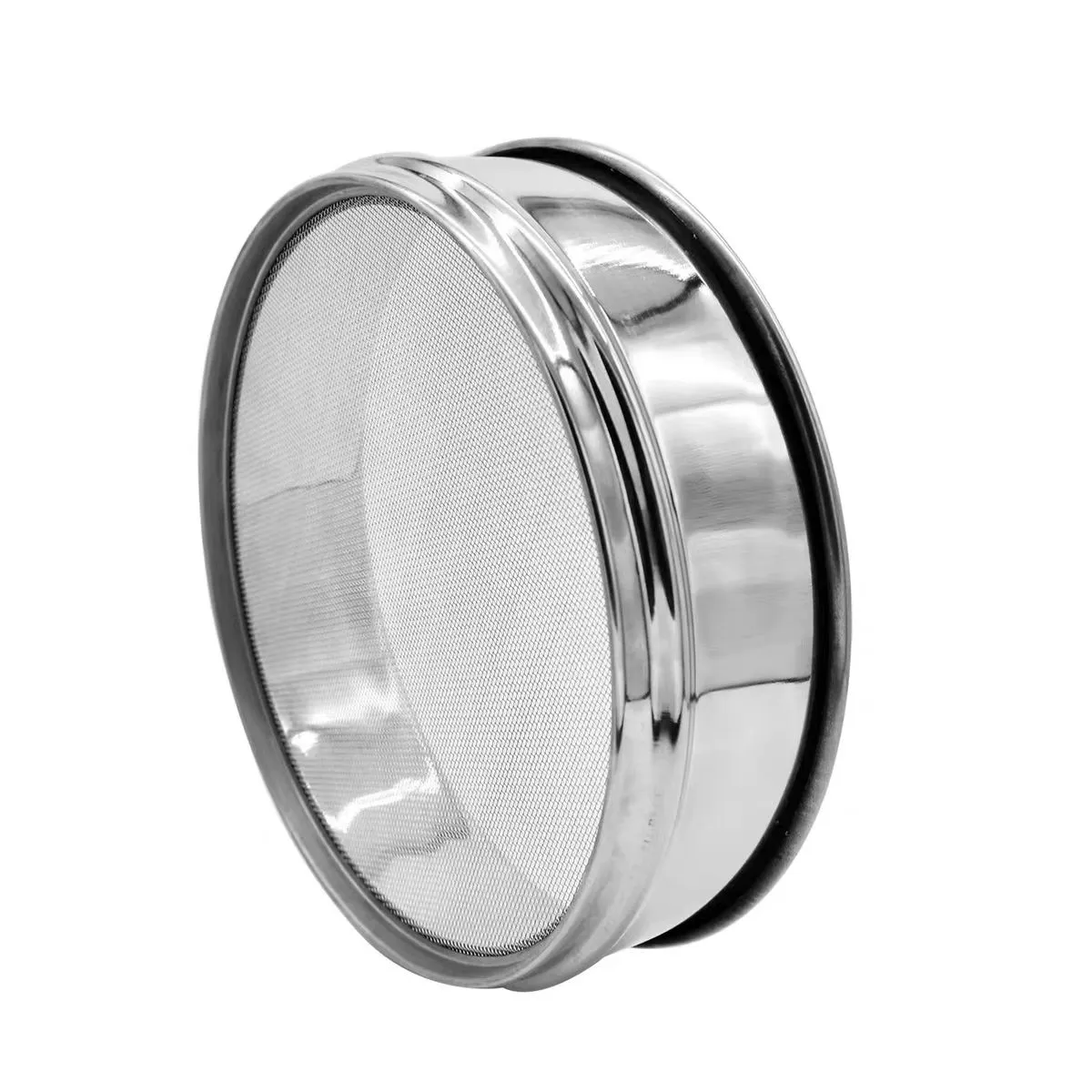
Below is a table outlining common parameters and their typical ranges for various types of decorative metal grid products. These values are indicative and can be customized based on project requirements. Our Metal Sieve Mesh, for example, can be tailored for specific filtration needs while maintaining a visually appealing pattern.
| Parameter | Expanded Metal Grid | Perforated Metal Grid | Woven Wire Mesh (e.g., Metal Sieve Mesh) |
|---|---|---|---|
| Materials | Carbon Steel, SS304/316, Aluminum | Carbon Steel, SS304/316, Aluminum, Copper, Brass | SS304/316/316L, Galvanized Steel, Copper, Nickel |
| Thickness/Gauge | 0.5mm - 6.0mm (26 GA - 3 GA) | 0.3mm - 10.0mm (28 GA - 7 GA) | 0.025mm - 10.0mm (Wire Diameter) |
| Opening Size (Aperture) | SWD: 4mm - 76mm, LWD: 8mm - 200mm | 0.5mm - 100mm (Round, Square, Slot) | 0.025mm - 100mm (Mesh Count from 2 to 635) |
| Open Area (%) | 30% - 85% (Varies with pattern) | 20% - 70% (Varies with hole size & pitch) | 10% - 90% (Varies with wire dia. & mesh count) |
| Finishes | Mill finish, Powder Coated, Galvanized, Anodized | Powder Coated, Anodized, Polished, PVDF | Mill finish, Polished, Electro-polished |
Diverse Application Scenarios for Decorative Metal Grid
The applications of decorative metal grid are incredibly broad, spanning numerous sectors where aesthetics, functionality, and durability are paramount. In architectural contexts, these grids are frequently used for building facades, offering sun shading and ventilation, contributing to sustainable building practices, and creating dynamic visual textures. They also serve as attractive balcony infills, stair railings, and ceiling panels, enhancing both safety and design appeal. For interior spaces, the versatility of decorative metal grilles for cabinet doors, room dividers, and decorative screens adds a modern, industrial-chic touch while maintaining an open feel. The ability to customize patterns and finishes allows for seamless integration into various design themes, from minimalist to highly ornate.
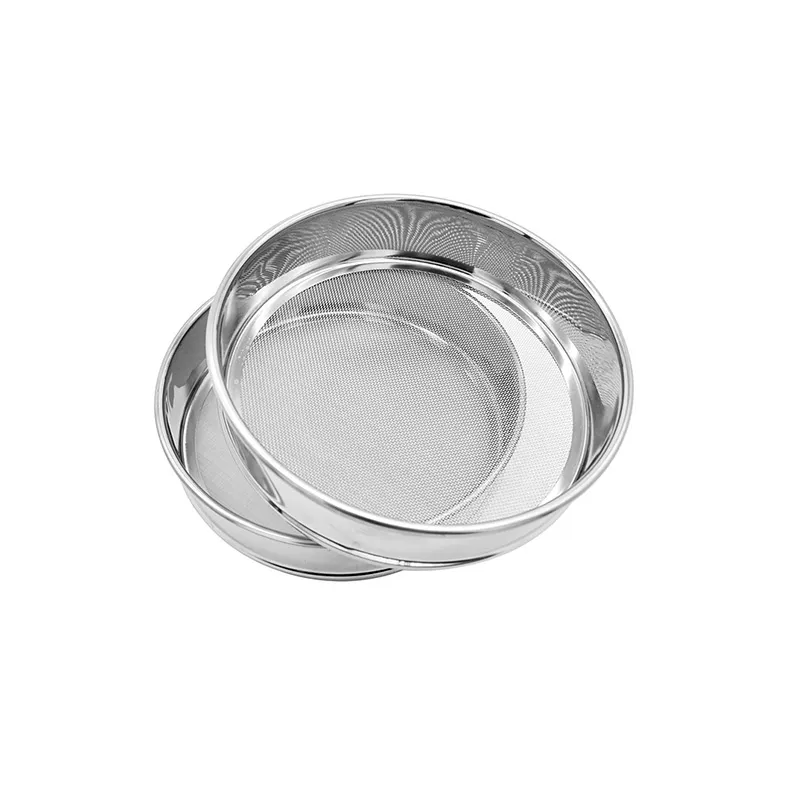
Beyond aesthetics, decorative metal grill mesh products find critical roles in industrial and security applications. They are employed as robust security barriers, machine guards, and protective screens due to their high strength-to-weight ratio and resistance to impact. In petrochemical and metallurgy industries, specialized corrosion-resistant grids are utilized for platforms, walkways, and protective enclosures around equipment, demonstrating their resilience in harsh environments. The Metal Sieve Mesh, a variant of these grids, is specifically engineered for filtration and separation in demanding industrial processes, showcasing the dual nature of these products to be both decorative and highly functional. This extensive range of applications underscores the strategic importance of choosing the right type of decorative metal grid for optimal performance and aesthetic integration.
Technical Advantages and Performance Benefits
The inherent technical advantages of decorative metal grid contribute significantly to their widespread adoption and superior performance across diverse applications. One primary benefit is their exceptional durability and longevity, particularly when fabricated from materials like stainless steel or aluminum, which offer inherent corrosion resistance. This extends the product’s service life, reduces maintenance costs, and ensures structural integrity even in challenging environmental conditions, such as high humidity or exposure to chemicals. The open structure of these grids also provides excellent light transmission and airflow, which can contribute to significant energy savings by reducing the need for artificial lighting and improving natural ventilation in buildings. For instance, facades using decorative metal grid can decrease solar heat gain by up to 30%, thus lowering cooling demands.

Furthermore, the sound-dampening properties of certain mesh types can enhance acoustic comfort in commercial or public spaces. The high strength-to-weight ratio, particularly evident in steel expanded metal, allows for robust yet lightweight structures, simplifying installation and reducing load-bearing requirements. Safety is another critical advantage, as these grids can serve as effective fall protection barriers, secure enclosures, and non-slip surfaces for walkways and stairs. Their ability to withstand extreme temperatures and resist fire further enhances safety profiles. These technical attributes make decorative metal grid solutions a compelling choice for projects demanding high performance, aesthetic value, and long-term cost-effectiveness.
Tailored Customization Solutions
Customization is a cornerstone of the decorative metal grid industry, allowing architects, designers, and industrial clients to achieve precise functional and aesthetic objectives. Manufacturers offer extensive options to tailor grids to specific project needs, encompassing material selection, pattern design, dimensions, and finishing treatments. Clients can specify various metals—stainless steel for high corrosion resistance, aluminum for lightweight applications, or brass for a distinct aesthetic—each offering unique properties. The ability to create bespoke patterns, whether through precision perforation or specialized expansion techniques, ensures that each decorative metal grill mesh product perfectly integrates with the architectural vision. This flexibility is crucial for achieving unique visual effects, from subtle textures to bold, intricate designs that become focal points.

Beyond the base material and pattern, finishing options play a pivotal role in the final appearance and performance. Powder coating provides a durable, aesthetically versatile finish available in a vast array of colors, while anodizing enhances corrosion resistance and creates a metallic luster. For applications requiring specific light or privacy control, the percentage of open area can be precisely controlled, along with the thickness of the material to meet structural load requirements. Our expertise in manufacturing the Metal Sieve Mesh also extends to customizing aperture sizes and mesh configurations for specific filtration efficiency while maintaining optimal flow rates. This comprehensive approach to customization ensures that every decorative metal grid solution is perfectly aligned with the client's design intent and operational demands.
Manufacturer Comparison Factors
When selecting a supplier for decorative metal grid solutions, B2B decision-makers must consider several critical factors beyond just cost. A reputable manufacturer differentiates itself through adherence to quality standards, extensive product range, and comprehensive customer support. Firstly, verify certifications such as ISO 9001, which indicates a robust quality management system and commitment to consistent product excellence. Experience in the field is also paramount; look for manufacturers with a proven track record of successful projects and a deep understanding of varied industry requirements. A manufacturer's ability to provide comprehensive technical data, including material certifications, load-bearing capacities, and corrosion resistance ratings, reflects their expertise and transparency.

Secondly, evaluate the breadth of their product offerings and customization capabilities. A leading manufacturer should provide a wide array of options for decorative metal grill mesh, decorative metal grilles for cabinet doors, and steel expanded metal, encompassing different materials, patterns, thicknesses, and finishes. Their capacity for bespoke solutions, including precision cutting and custom fabrication, is crucial for unique architectural or industrial projects. Lastly, consider the manufacturer's logistical efficiency, delivery reliability, and post-sales support. A strong partnership with a supplier that offers timely delivery, clear warranty terms, and responsive technical assistance ensures project continuity and long-term satisfaction. Our commitment to these principles ensures that clients receive not just products, but complete, reliable solutions tailored to their specific needs.
Ensuring Quality, Reliability, and Trustworthiness
The foundation of any successful B2B partnership, especially in specialized materials like decorative metal grid, lies in trust, quality, and proven reliability. We adhere to stringent international quality standards, including ISO 9001:2015 certification for our manufacturing processes, guaranteeing that every product, from custom architectural meshes to Metal Sieve Mesh, meets rigorous quality control benchmarks. Our long-standing history of serving diverse industries, with decades of combined experience among our technical teams, speaks to our authoritative position in the market. We provide comprehensive material test reports, performance data, and certifications for all products, ensuring full transparency and compliance with industry regulations. Our commitment to quality is further reinforced by our use of advanced inspection equipment and adherence to ASTM material specifications, ensuring dimensional accuracy and material integrity.
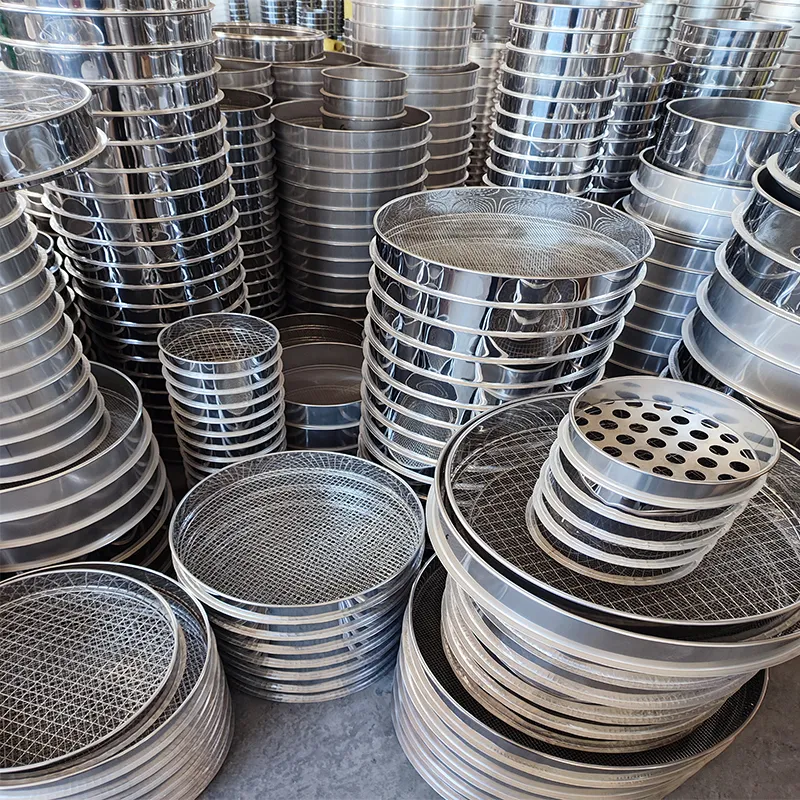
Our reputation for trustworthiness is built on consistent performance, timely delivery, and exceptional customer support. We offer clear, actionable communication throughout the project lifecycle, from initial consultation to after-sales service. Our standard warranty commitments provide peace of mind, covering manufacturing defects and ensuring product longevity. Furthermore, our client feedback mechanism allows us to continuously improve our offerings and service delivery. For example, a recent project involving large-scale steel expanded metal panels for a public art installation showcased our ability to deliver bespoke, high-quality solutions within tight deadlines, earning accolades for precision and durability. This dedication to excellence and client satisfaction establishes us as a reliable partner in the supply of premium decorative metal grid products.
Frequently Asked Questions (FAQ)
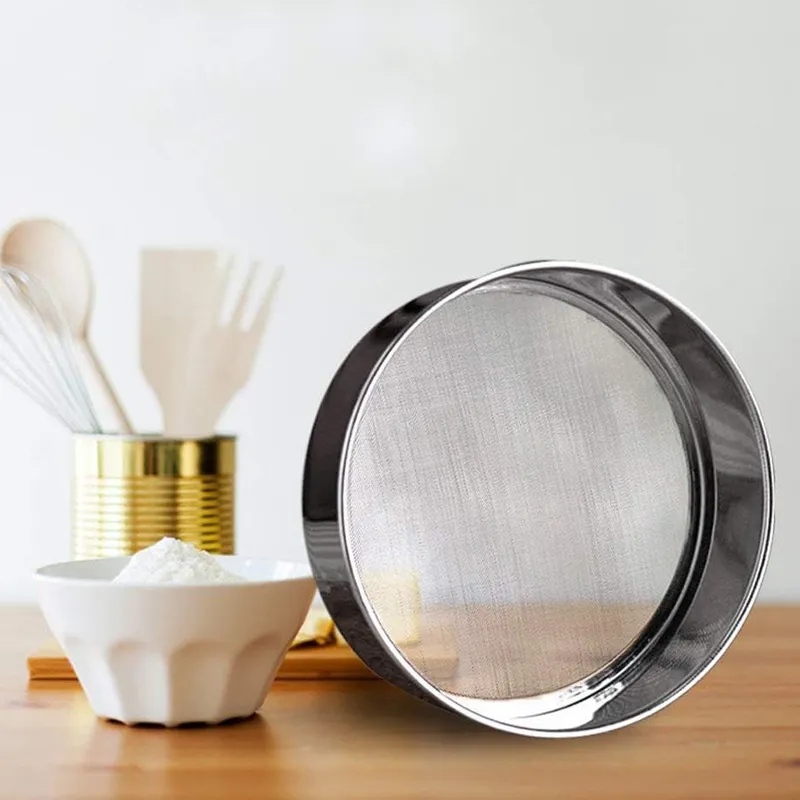
Q1: What is the typical lead time for custom decorative metal grid orders?
A1: Lead times for custom decorative metal grid orders vary depending on the complexity of the design, material availability, order volume, and current production schedules. Typically, standard custom orders can range from 3-6 weeks from confirmation of design and payment. For highly intricate patterns or very large volumes, lead times may extend to 8-12 weeks. We recommend consulting with our sales team directly for a precise estimate based on your specific project requirements, ensuring transparent communication regarding expected delivery windows. We strive to optimize our production processes to meet project timelines efficiently without compromising quality.
Q2: How do I determine the best material for my decorative metal grid application?
A2: Selecting the optimal material for your decorative metal grid depends on several factors: the environmental conditions (indoor/outdoor, corrosive agents, temperature extremes), required strength and durability, aesthetic preferences, and budget. Stainless steel (e.g., SS304, SS316L) is ideal for high corrosion resistance and demanding environments. Aluminum is lightweight, corrosion-resistant, and easily formable, suitable for architectural facades and decorative elements. Carbon steel is economical and robust, often used for industrial guarding or where galvanization or powder coating provides sufficient protection. Our technical experts are available to guide you through material selection, ensuring your chosen material aligns perfectly with the performance and visual demands of your project.
Q3: What are the maintenance requirements for decorative metal grill mesh products?
A3: The maintenance requirements for decorative metal grill mesh products are generally low, particularly for those made from stainless steel or aluminum with protective finishes. Regular cleaning with mild soap and water is typically sufficient to remove dust and grime. For outdoor installations or highly exposed areas, periodic inspection for debris accumulation or minor damage is recommended. Avoid harsh abrasives or chemical cleaners that could damage the finish. For specific advice based on the material and finish of your decorative metal grid, consult our product care guidelines or reach out to our customer support team for detailed instructions.
Logistics, Delivery, and Customer Support
Efficient logistics and robust customer support are integral components of our commitment to delivering high-quality decorative metal grid solutions. We understand the critical nature of timely delivery in B2B projects. Our streamlined supply chain ensures that raw materials are sourced efficiently, and our manufacturing processes are optimized for quick turnaround times without compromising quality. We work with trusted global shipping partners to facilitate secure and prompt delivery to your specified location, whether domestic or international. Detailed shipping schedules and tracking information are provided to keep you informed every step of the way, minimizing any potential project delays and ensuring the arrival of your steel expanded metal or other grid products.
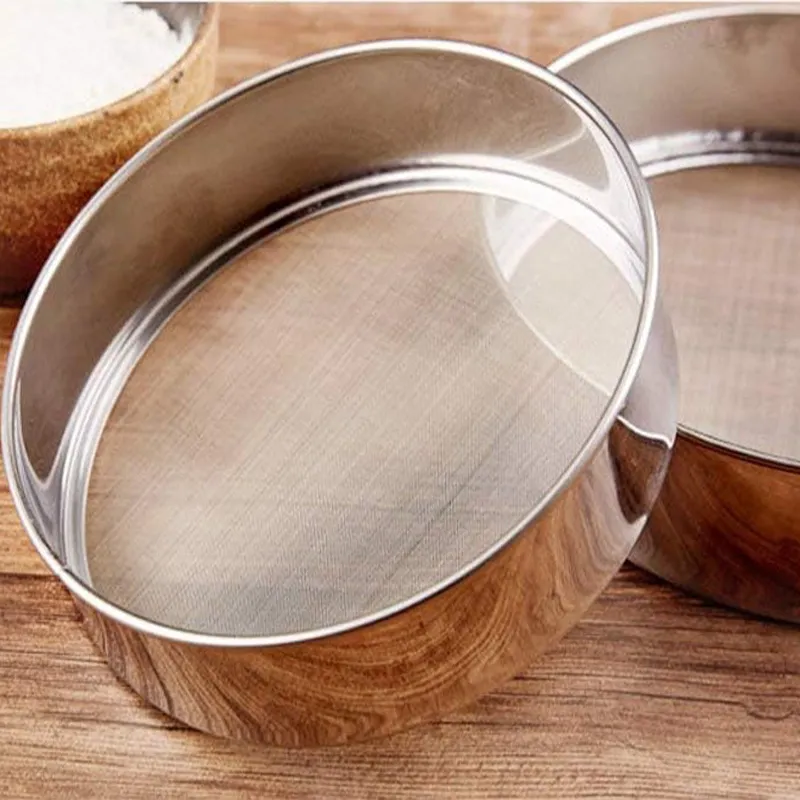
Our dedication extends beyond manufacturing and delivery. We offer comprehensive customer support designed to assist you throughout the entire project lifecycle. This includes initial technical consultations, detailed quotation processes, post-purchase inquiries, and assistance with product installation or maintenance. Every decorative metal grid product we supply comes with a clear warranty against manufacturing defects, underscoring our confidence in its durability and performance. Our responsive team is readily available to address any concerns, provide technical guidance, or facilitate re-orders, reinforcing our role as a trusted partner for all your metal grid requirements. We are committed to fostering long-term relationships built on mutual trust and consistent excellence.
Conclusion
The realm of decorative metal grid products, including versatile offerings like Metal Sieve Mesh, represents a critical intersection of advanced engineering, aesthetic innovation, and practical utility. From their meticulous manufacturing processes, adhering to global standards like ISO and ASTM, to their diverse applications across architecture, interior design, and various industrial sectors, these grids offer unparalleled benefits in durability, energy efficiency, and design flexibility. The ability to customize material, pattern, and finish ensures that each project’s unique requirements are met with precision. As industries continue to evolve, the demand for high-performance, aesthetically pleasing, and sustainable metal solutions will only grow, cementing the role of decorative metal grid as an indispensable material for contemporary construction and design.
Choosing the right manufacturer is as crucial as selecting the right product. Our commitment to stringent quality control, transparent processes, comprehensive customer support, and timely delivery ensures that our clients receive not just products, but holistic solutions that enhance their projects and contribute to long-term success. We invite B2B professionals to explore the full potential of these advanced metal grids and partner with us to realize their most ambitious design and functional goals.
References
- International Organization for Standardization (ISO). ISO 9001: Quality Management Systems – Requirements.
- ASTM International. Standard Specification for Stainless Steel, Chromium and Chromium-Nickel Stainless Steel Plate, Sheet, and Strip.
- U.S. General Services Administration. "Sustainable Building Design Guides: Exterior Shading."
- Market Research Report, "Expanded Metal Market Size, Share & Trends Analysis Report By Material."
- Architectural Digest. "The Resurgence of Metal Grilles in Modern Interior Design."
Diverse Application Scenarios for Decorative Metal Grid
The applications of decorative metal grid are incredibly broad, spanning numerous sectors where aesthetics, functionality, and durability are paramount. In architectural contexts, these grids are frequently used for building facades, offering sun shading and ventilation, contributing to sustainable building practices, and creating dynamic visual textures. They also serve as attractive balcony infills, stair railings, and ceiling panels, enhancing both safety and design appeal. For interior spaces, the versatility of decorative metal grilles for cabinet doors, room dividers, and decorative screens adds a modern, industrial-chic touch while maintaining an open feel. The ability to customize patterns and finishes allows for seamless integration into various design themes, from minimalist to highly ornate.

Beyond aesthetics, decorative metal grill mesh products find critical roles in industrial and security applications. They are employed as robust security barriers, machine guards, and protective screens due to their high strength-to-weight ratio and resistance to impact. In petrochemical and metallurgy industries, specialized corrosion-resistant grids are utilized for platforms, walkways, and protective enclosures around equipment, demonstrating their resilience in harsh environments. The Metal Sieve Mesh, a variant of these grids, is specifically engineered for filtration and separation in demanding industrial processes, showcasing the dual nature of these products to be both decorative and highly functional. This extensive range of applications underscores the strategic importance of choosing the right type of decorative metal grid for optimal performance and aesthetic integration.
Technical Advantages and Performance Benefits
The inherent technical advantages of decorative metal grid contribute significantly to their widespread adoption and superior performance across diverse applications. One primary benefit is their exceptional durability and longevity, particularly when fabricated from materials like stainless steel or aluminum, which offer inherent corrosion resistance. This extends the product’s service life, reduces maintenance costs, and ensures structural integrity even in challenging environmental conditions, such as high humidity or exposure to chemicals. The open structure of these grids also provides excellent light transmission and airflow, which can contribute to significant energy savings by reducing the need for artificial lighting and improving natural ventilation in buildings. For instance, facades using decorative metal grid can decrease solar heat gain by up to 30%, thus lowering cooling demands.

Furthermore, the sound-dampening properties of certain mesh types can enhance acoustic comfort in commercial or public spaces. The high strength-to-weight ratio, particularly evident in steel expanded metal, allows for robust yet lightweight structures, simplifying installation and reducing load-bearing requirements. Safety is another critical advantage, as these grids can serve as effective fall protection barriers, secure enclosures, and non-slip surfaces for walkways and stairs. Their ability to withstand extreme temperatures and resist fire further enhances safety profiles. These technical attributes make decorative metal grid solutions a compelling choice for projects demanding high performance, aesthetic value, and long-term cost-effectiveness.
Tailored Customization Solutions
Customization is a cornerstone of the decorative metal grid industry, allowing architects, designers, and industrial clients to achieve precise functional and aesthetic objectives. Manufacturers offer extensive options to tailor grids to specific project needs, encompassing material selection, pattern design, dimensions, and finishing treatments. Clients can specify various metals—stainless steel for high corrosion resistance, aluminum for lightweight applications, or brass for a distinct aesthetic—each offering unique properties. The ability to create bespoke patterns, whether through precision perforation or specialized expansion techniques, ensures that each decorative metal grill mesh product perfectly integrates with the architectural vision. This flexibility is crucial for achieving unique visual effects, from subtle textures to bold, intricate designs that become focal points.

Beyond the base material and pattern, finishing options play a pivotal role in the final appearance and performance. Powder coating provides a durable, aesthetically versatile finish available in a vast array of colors, while anodizing enhances corrosion resistance and creates a metallic luster. For applications requiring specific light or privacy control, the percentage of open area can be precisely controlled, along with the thickness of the material to meet structural load requirements. Our expertise in manufacturing the Metal Sieve Mesh also extends to customizing aperture sizes and mesh configurations for specific filtration efficiency while maintaining optimal flow rates. This comprehensive approach to customization ensures that every decorative metal grid solution is perfectly aligned with the client's design intent and operational demands.
Manufacturer Comparison Factors
When selecting a supplier for decorative metal grid solutions, B2B decision-makers must consider several critical factors beyond just cost. A reputable manufacturer differentiates itself through adherence to quality standards, extensive product range, and comprehensive customer support. Firstly, verify certifications such as ISO 9001, which indicates a robust quality management system and commitment to consistent product excellence. Experience in the field is also paramount; look for manufacturers with a proven track record of successful projects and a deep understanding of varied industry requirements. A manufacturer's ability to provide comprehensive technical data, including material certifications, load-bearing capacities, and corrosion resistance ratings, reflects their expertise and transparency.

Secondly, evaluate the breadth of their product offerings and customization capabilities. A leading manufacturer should provide a wide array of options for decorative metal grill mesh, decorative metal grilles for cabinet doors, and steel expanded metal, encompassing different materials, patterns, thicknesses, and finishes. Their capacity for bespoke solutions, including precision cutting and custom fabrication, is crucial for unique architectural or industrial projects. Lastly, consider the manufacturer's logistical efficiency, delivery reliability, and post-sales support. A strong partnership with a supplier that offers timely delivery, clear warranty terms, and responsive technical assistance ensures project continuity and long-term satisfaction. Our commitment to these principles ensures that clients receive not just products, but complete, reliable solutions tailored to their specific needs.
Ensuring Quality, Reliability, and Trustworthiness
The foundation of any successful B2B partnership, especially in specialized materials like decorative metal grid, lies in trust, quality, and proven reliability. We adhere to stringent international quality standards, including ISO 9001:2015 certification for our manufacturing processes, guaranteeing that every product, from custom architectural meshes to Metal Sieve Mesh, meets rigorous quality control benchmarks. Our long-standing history of serving diverse industries, with decades of combined experience among our technical teams, speaks to our authoritative position in the market. We provide comprehensive material test reports, performance data, and certifications for all products, ensuring full transparency and compliance with industry regulations. Our commitment to quality is further reinforced by our use of advanced inspection equipment and adherence to ASTM material specifications, ensuring dimensional accuracy and material integrity.

Our reputation for trustworthiness is built on consistent performance, timely delivery, and exceptional customer support. We offer clear, actionable communication throughout the project lifecycle, from initial consultation to after-sales service. Our standard warranty commitments provide peace of mind, covering manufacturing defects and ensuring product longevity. Furthermore, our client feedback mechanism allows us to continuously improve our offerings and service delivery. For example, a recent project involving large-scale steel expanded metal panels for a public art installation showcased our ability to deliver bespoke, high-quality solutions within tight deadlines, earning accolades for precision and durability. This dedication to excellence and client satisfaction establishes us as a reliable partner in the supply of premium decorative metal grid products.
Frequently Asked Questions (FAQ)

Q1: What is the typical lead time for custom decorative metal grid orders?
A1: Lead times for custom decorative metal grid orders vary depending on the complexity of the design, material availability, order volume, and current production schedules. Typically, standard custom orders can range from 3-6 weeks from confirmation of design and payment. For highly intricate patterns or very large volumes, lead times may extend to 8-12 weeks. We recommend consulting with our sales team directly for a precise estimate based on your specific project requirements, ensuring transparent communication regarding expected delivery windows. We strive to optimize our production processes to meet project timelines efficiently without compromising quality.
Q2: How do I determine the best material for my decorative metal grid application?
A2: Selecting the optimal material for your decorative metal grid depends on several factors: the environmental conditions (indoor/outdoor, corrosive agents, temperature extremes), required strength and durability, aesthetic preferences, and budget. Stainless steel (e.g., SS304, SS316L) is ideal for high corrosion resistance and demanding environments. Aluminum is lightweight, corrosion-resistant, and easily formable, suitable for architectural facades and decorative elements. Carbon steel is economical and robust, often used for industrial guarding or where galvanization or powder coating provides sufficient protection. Our technical experts are available to guide you through material selection, ensuring your chosen material aligns perfectly with the performance and visual demands of your project.
Q3: What are the maintenance requirements for decorative metal grill mesh products?
A3: The maintenance requirements for decorative metal grill mesh products are generally low, particularly for those made from stainless steel or aluminum with protective finishes. Regular cleaning with mild soap and water is typically sufficient to remove dust and grime. For outdoor installations or highly exposed areas, periodic inspection for debris accumulation or minor damage is recommended. Avoid harsh abrasives or chemical cleaners that could damage the finish. For specific advice based on the material and finish of your decorative metal grid, consult our product care guidelines or reach out to our customer support team for detailed instructions.
Logistics, Delivery, and Customer Support
Efficient logistics and robust customer support are integral components of our commitment to delivering high-quality decorative metal grid solutions. We understand the critical nature of timely delivery in B2B projects. Our streamlined supply chain ensures that raw materials are sourced efficiently, and our manufacturing processes are optimized for quick turnaround times without compromising quality. We work with trusted global shipping partners to facilitate secure and prompt delivery to your specified location, whether domestic or international. Detailed shipping schedules and tracking information are provided to keep you informed every step of the way, minimizing any potential project delays and ensuring the arrival of your steel expanded metal or other grid products.

Our dedication extends beyond manufacturing and delivery. We offer comprehensive customer support designed to assist you throughout the entire project lifecycle. This includes initial technical consultations, detailed quotation processes, post-purchase inquiries, and assistance with product installation or maintenance. Every decorative metal grid product we supply comes with a clear warranty against manufacturing defects, underscoring our confidence in its durability and performance. Our responsive team is readily available to address any concerns, provide technical guidance, or facilitate re-orders, reinforcing our role as a trusted partner for all your metal grid requirements. We are committed to fostering long-term relationships built on mutual trust and consistent excellence.
Conclusion
The realm of decorative metal grid products, including versatile offerings like Metal Sieve Mesh, represents a critical intersection of advanced engineering, aesthetic innovation, and practical utility. From their meticulous manufacturing processes, adhering to global standards like ISO and ASTM, to their diverse applications across architecture, interior design, and various industrial sectors, these grids offer unparalleled benefits in durability, energy efficiency, and design flexibility. The ability to customize material, pattern, and finish ensures that each project’s unique requirements are met with precision. As industries continue to evolve, the demand for high-performance, aesthetically pleasing, and sustainable metal solutions will only grow, cementing the role of decorative metal grid as an indispensable material for contemporary construction and design.
Choosing the right manufacturer is as crucial as selecting the right product. Our commitment to stringent quality control, transparent processes, comprehensive customer support, and timely delivery ensures that our clients receive not just products, but holistic solutions that enhance their projects and contribute to long-term success. We invite B2B professionals to explore the full potential of these advanced metal grids and partner with us to realize their most ambitious design and functional goals.
References
- International Organization for Standardization (ISO). ISO 9001: Quality Management Systems – Requirements.
- ASTM International. Standard Specification for Stainless Steel, Chromium and Chromium-Nickel Stainless Steel Plate, Sheet, and Strip.
- U.S. General Services Administration. "Sustainable Building Design Guides: Exterior Shading."
- Market Research Report, "Expanded Metal Market Size, Share & Trends Analysis Report By Material."
- Architectural Digest. "The Resurgence of Metal Grilles in Modern Interior Design."

